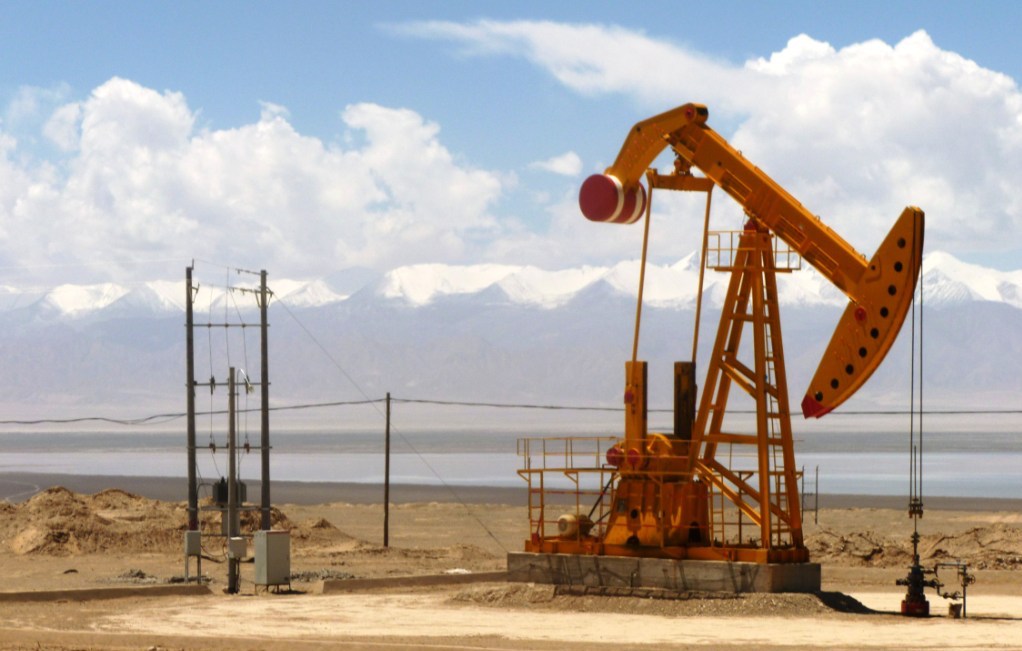
Long-depressed oil prices are suddenly soaring in response to the Russian invasion of Ukraine, with impacts already being felt globally. Kazakhstan, recently wracked by internal instability, is facing economic crisis as its crude exports are threatened. Most of these exports pass through a pipeline linking Kazakhstan’s western oil-fields to Russia’s Black Sea terminal at Novorossiysk. That terminal, owned by the Caspian Pipeline Consortium (CPC), lies within 250 kilometers of the Ukrainian port of Mariupol, now besieged by Russian forces. This proximity is sufficient for tankers loading at the Novorossiysk terminal to incur a “war risk insurance premium.” According to S&P Global Platts, the premium has been high enough to deter buyers since the Russian invasion of Ukraine was launched late last month.
One of the main destinations for crude exported through the Novorossiysk terminal is Ukraine’s port of Odessa, where it is fed into a pipeline network to European markets. With Odessa expected to come under Russian siege and bombardment next, that route is effectively closed.
Production at Kazakhstan’s huge Chevron-operated Tengiz oil-field and the flow through the CPC line are continuing as normal—for now. However, thanks to the “war risk premium,” the price of Kazakh crude has fallen—even with global oil prices at their highest since 2008. (OilPrice.com)
Then there are Russia’s own hydrocarbons, long a mainstay of the European market. The European Union receives Russian oil by both tanker and a network of pipelines—some of which pass through Ukrainian territory. Particularly critical is the Druzhba pipeline, built in the Soviet era and now operated by Russia’s Transneft, supplying refineries in Poland, Germany, Hungary, Slovakia and the Czech Republic. The countries with the largest imports of Russian crude are the Netherlands, Italy, France and Finland. (CleanTechnica) Much if not all of this flow is now likely to be disrupted.
As the Ukraine invasion was initiated, Berlin officially suspended the $11 billion Nord Stream 2 pipeline, which is to carry Russian gas under the Baltic Sea to Germany. European Union officials say they’re working on a plan that could cut the bloc’s import needs from Russia by almost 80% this year. Russia has meanwhile threatened to cut gas supplies to Europe via the Nord Stream 1 pipeline, a move that could heighten the turmoil in energy markets and drive consumer prices even higher. (NDTV)
President Joe Biden signed an executive order March 8 banning the import of petroleum products from Russia into the US, and prohibiting new investment in Russia’s energy sector. Biden said the ban was imposed a response to “Russia’s unjustified, unprovoked, unyielding, and unconscionable war against Ukraine.”
At his press conference announcing the order, Biden voiced a warning to the oil companies, urging that the war should not serve as an excuse for excessive price hikes or the padding of profits. “Russia’s aggression is costing us all, and it’s no time for profiteering or price-gouging,” he stated. (Jurist)
A little price relief followed the March 9 announcement by the United Arab Emirates that it will boost production. (CNN) But while the oil companies and producer countries will attempt to blame each other for the spike, it is actually the oil futures market that plays a determinant role in fixing the international price. As with anything on Wall Street, there’s a big psychological element involved, which is why every escalation in the Middle East (without fail) jacks up oil prices. A war in Europe will almost certainly mean another oil shock, with grim implications for the world economy and Biden’s political chances.
Photo of Kazakh oil-field via Wikimedia Commons




